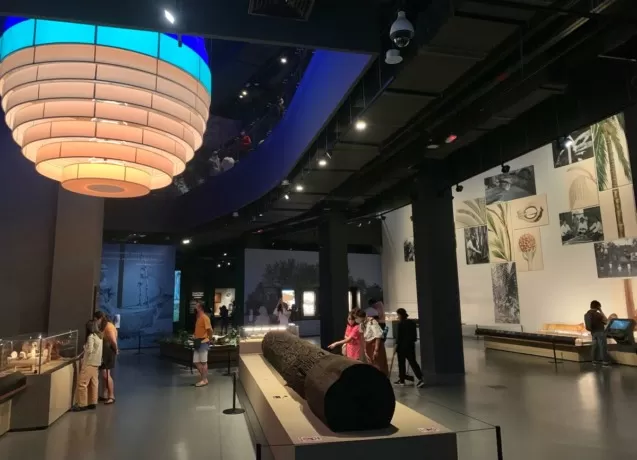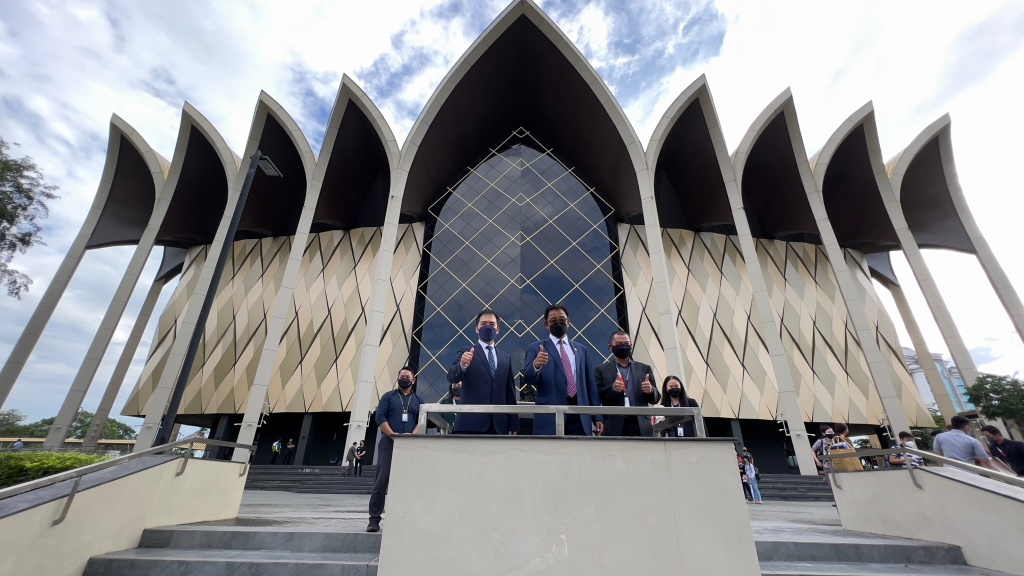Look Into the Remarkable Globe of Borneo's Cultural Heritage: A Comprehensive Guide to the Cultures Museum Experience
Submersing oneself in the elaborate tapestry of Borneo's cultural heritage is comparable to starting a voyage via time and practice. The blend of indigenous people, conventional inventions, captivating performances, and historical stories housed within the boundaries of the island's galleries supplies a glimpse right into a globe bristling with profound traditions and vibrant custom-mades. As site visitors go across through these databases of society, they are bid to check out a realm where past and existing intermingle, welcoming reflection on the resilience and richness of Borneo's diverse heritage.
Indigenous Tribes of Borneo
Borneo is home to over 50 aboriginal tribes, each with distinct cultural practices and customs that have been preserved for generations. Among these tribes are the Iban, known for their detailed tattoos and traditional longhouses where numerous families reside. The Dayak people, an additional prominent team, involve in fancy spiritual events and are skilled artisans, crafting detailed timber carvings and woven fabrics. The Penan people, on the other hand, are nomadic hunter-gatherers with a deep link to the jungle, making use of blowpipes for searching and celebration wild plants for sustenance.
These indigenous tribes play an important role in preserving Borneo's abundant cultural tapestry. In spite of external impacts and innovation, lots of people proceed to promote their languages, personalizeds, and ideas. Visitors to Borneo have the opportunity to engage themselves in the special lifestyles of these tribes via cultural tours, homestays, and community-based tourism efforts. By involving with these aboriginal communities, visitors can acquire a much deeper appreciation for the diversity and durability of Borneo's aboriginal heritage.
Standard Inventions and Artefacts

One noticeable example of typical handicrafts in Borneo is the manufacturing of woven products - Borneo Cultures Museum. Competent weavers utilize all-natural fibers like bamboo, rattan, and pandan leaves to develop detailed baskets, floor coverings, and accessories embellished with vivid patterns that hold symbolic meanings within the area
The art of woodcarving is one more significant aspect of Borneo's typical handicrafts. Artisans carve intricate designs right into various types of wood to create masks, sculptures, and musical instruments that not only serve functional purposes however additionally hold social importance, frequently portraying folklore or spiritual ideas.
Moreover, Borneo is renowned for its beadwork, with artisans thoroughly crafting beads from products like glass, seeds, and shells to create precious jewelry, apparel embellishments, and attractive products that showcase the area's lively aesthetic customs. These traditional handicrafts and artefacts not only function as tangible expressions of Borneo's social heritage but likewise provide understandings into the areas' ideas, values, and way of life.

Cultural Performances and Festivals
With an ingrained connection to their social practices, the areas in Borneo come to life through vivid cultural performances and festivals that commemorate their heritage. These events showcase the rich variety of Borneo's ethnic teams, each offering one-of-a-kind dances, music, and routines that have actually been given with generations. Among the most popular celebrations is the Gawai Dayak, celebrated by the Dayak people to mark the rice harvesting period. Throughout this celebration, traditional songs fills the air, intricate dancings are carried out, and sophisticated conventional costumes are worn. One more considerable occasion is the Pesta Kaamatan, commemorated by the Kadazandusun community to offer thanks for the rice harvest. This festival features social performances, consisting of the Sumazau dance, and conventional sporting activities like the bamboo dancing. Site visitors to Borneo can immerse themselves in these celebrations, obtaining a deeper understanding of the region's social heritage and experiencing the warm hospitality of its people. Cultural performances and events serve as a vivid tip of Borneo's rich social tapestry and the significance of protecting these customs for future generations.
Historic Stories and Artefacts
Exploring the historic narratives go right here and artifacts of Borneo offers an interesting peek into the region's abundant past and cultural advancement. Borneo's historic tapestry is woven with diverse influences, reflecting the communications between native people, Chinese traders, European colonizers, and Malay sultanates. The artefacts found in Borneo showcase this detailed background, ranging from traditional crafts like complex beadwork and woodcarvings to archaeological prizes such as old pottery and devices.
Among one of the most engaging elements of Borneo's historical narratives is the preservation of oral practices gave via generations. These stories provide insights into the ideas, personalizeds, and every day lives of Borneo's citizens throughout the centuries. The artefacts uncovered from historical websites use concrete links to these narratives, allowing site visitors to witness the material culture of past cultures firsthand.
Contemporary Cultural Preservation Efforts

In addition, curricula and cultural exchange tasks play a critical role in increasing understanding concerning the relevance of protecting Borneo's special cultural heritage. By engaging schools, galleries, and the bigger neighborhood in conversations and activities that celebrate Borneo's varied societies, preservation initiatives can gain energy and support for long-lasting sustainability. Collaborations in between governmental bodies, charitable organizations, and local communities are important in driving these preservation ventures forward, guaranteeing that Borneo's rich social heritage stays vibrant and valued for generations to find.
Verdict
In conclusion, the social heritage of Borneo is rich and varied, with aboriginal tribes, typical inventions, cultural efficiencies, events, historic stories, and contemporary preservation efforts all adding to its originality and importance. Site visitors to Borneo's cultural galleries can acquire a much deeper understanding and appreciation of the region's cultural heritage, permitting a more immersive and informing experience.
Submersing oneself in the elaborate tapestry of Borneo's social heritage is similar to embarking on a trip through time and custom.With an ingrained connection to their cultural read this customs, the neighborhoods in Borneo come active through dynamic cultural performances and events that celebrate their heritage. Cultural efficiencies and celebrations offer as a dynamic suggestion of Borneo's abundant cultural tapestry and the significance of maintaining these traditions for future generations.
Additionally, instructional programs and cultural exchange activities play a crucial function in increasing recognition about the significance of protecting Borneo's special social heritage. Cooperations between governmental bodies, non-profit organizations, and neighborhood communities are vital in a knockout post driving these preservation undertakings onward, ensuring that Borneo's rich cultural heritage stays lively and valued for generations to come.